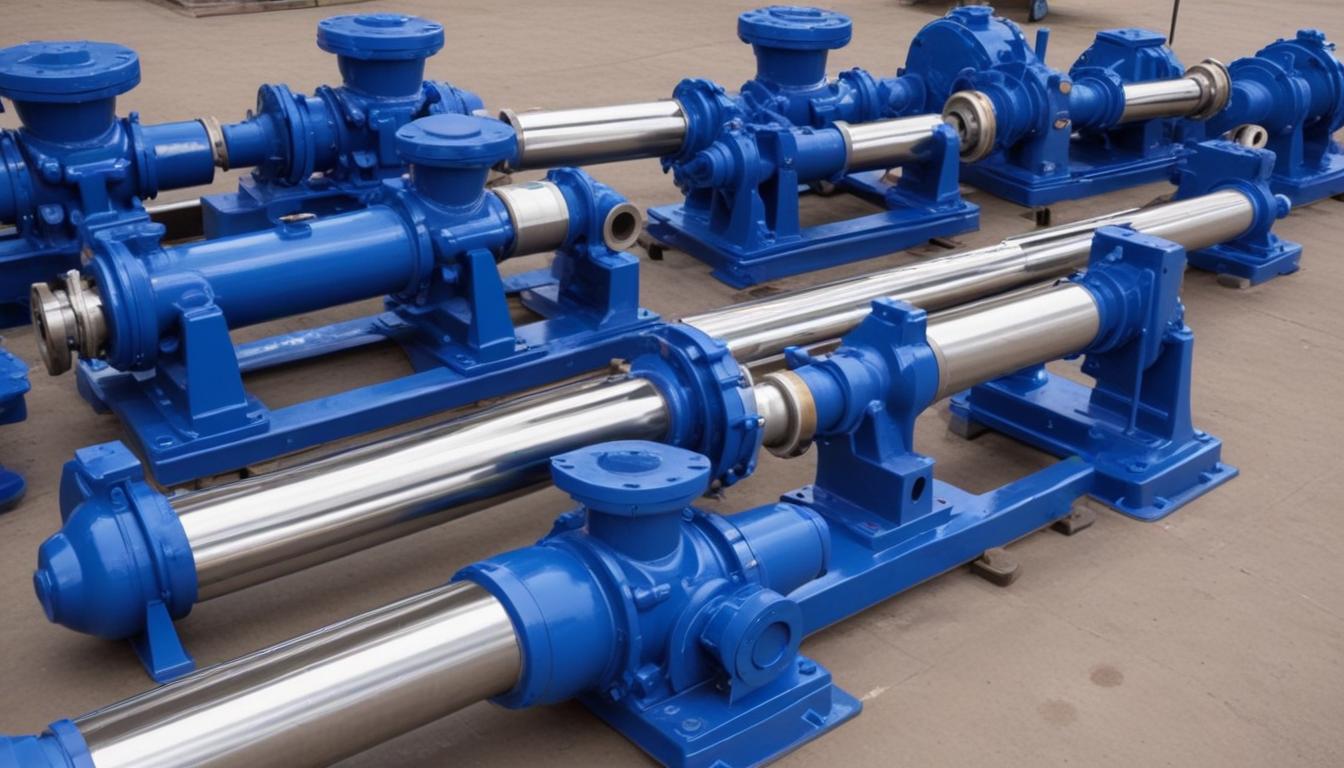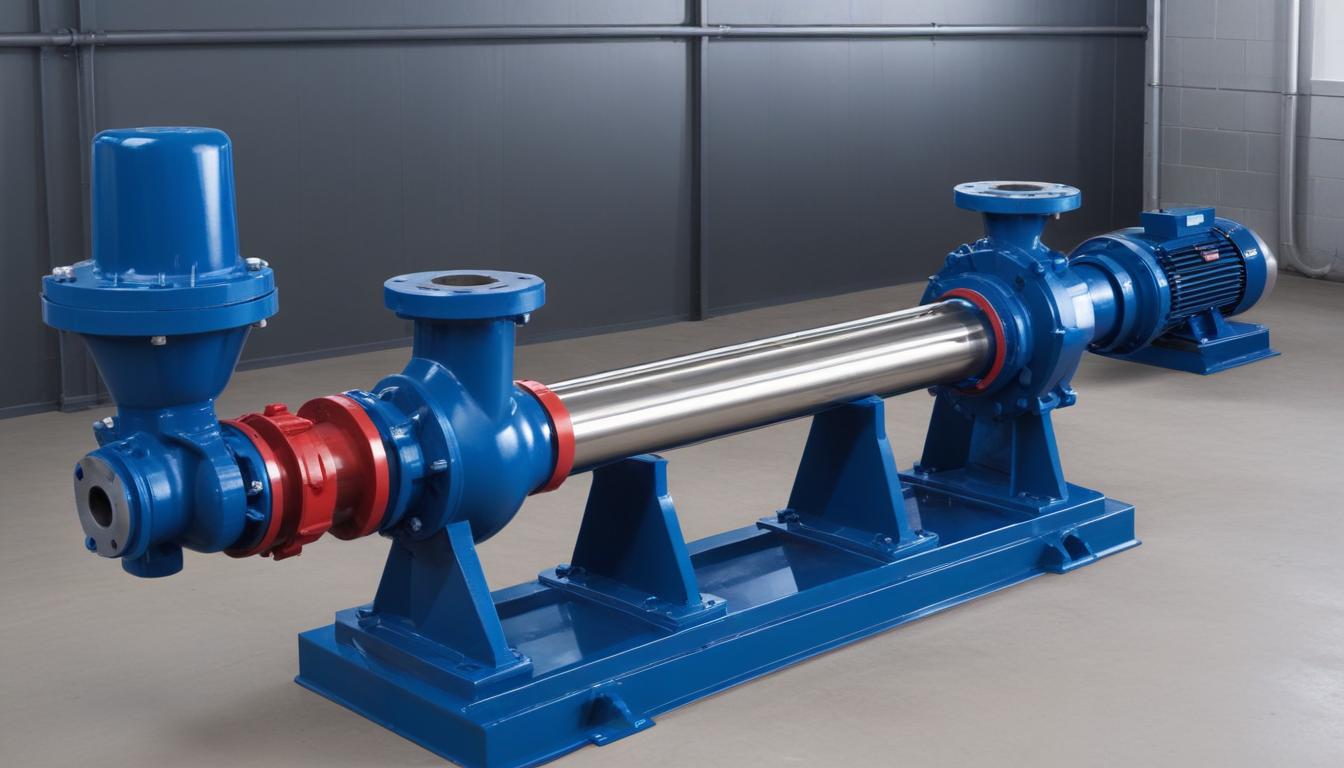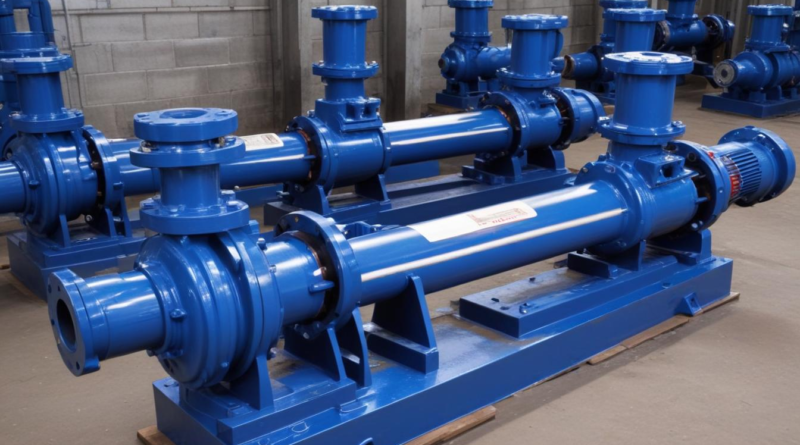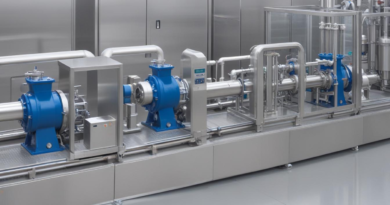How to achieve optimal performance with progressive cavity pumps
To achieve optimal performance from progressive cavity pumps, it is essential to understand their ideal operating conditions. These pumps are designed for transferring a variety of fluids, including viscous and non-Newtonian liquids. Operating outside the recommended parameters can lead to reduced efficiency and increased wear.
Key factors influencing the operating conditions include:
- Viscosity: The viscosity of the fluid being pumped should be within the pump’s specified range to minimize torque and wear on components.
- Temperature: Maintaining an optimal temperature is crucial, as high temperatures can alter fluid characteristics and affect pump performance.
- Flow Rate: A consistent flow rate tailored to the pump’s design is necessary for stable operation; fluctuations can create hydraulic shocks.
- Inlet Pressure: Adequate inlet pressure minimizes cavitation risk, which can severely impact pump longevity and effectiveness.
To further enhance the optimization of progressive cavity pumps, users should consider the following parameters:
- Fluid Characteristics: Conduct a thorough analysis of fluid properties, such as specific gravity and shear sensitivity, to select the most suitable pump configuration.
- Piping Design: Properly designed piping with minimal bends and appropriate sizes helps maintain pressure and flow consistency, thereby enhancing efficiency.
- Drive System: Choosing the right drive solution, whether electric or hydraulic, tailored to the application can lead to significant performance improvements.
Implementing these practices creates a conducive environment for optimal operation, allowing progressive cavity pumps to perform at their best while ensuring prolonged service life.
Key factors influencing performance
Several key factors significantly influence the performance of progressive cavity pumps. Understanding and addressing these factors is crucial for maintaining efficiency and achieving optimal operational outcomes.
The following variables are essential:
- Fluid Compatibility: Ensuring that the pump materials are compatible with the fluid being pumped is vital. This prevents chemical reactions that could lead to material degradation and pump failure.
- Pump Speed: The operational speed of the pump impacts the flow rate and pressure. Operating at the manufacturer’s recommended speed ensures consistent performance and reduces wear on components.
- System Pressure: System back pressure can greatly influence pump efficiency. Operators must ensure that the pump is not subjected to excessive pressure that could lead to operational instability.
- Wear Part Condition: Regular inspection and timely replacement of wear parts, such as stators and rotors, are critical to maintaining performance. Worn parts can lead to leaks and reduced efficiency.
In addition to these factors, external conditions also play a role in the optimization of progressive cavity pumps. Considerations include:
- Environmental Factors: Conditions such as humidity and ambient temperature can affect both the fluid characteristics and the performance of mechanical components. It is crucial to account for these factors during installation and operation.
- Maintenance Schedule: Establishing a rigorous maintenance routine focused on regular checks and servicing of the pump can mitigate long-term operational issues and extend the pump’s operational lifespan.
- Intelligent Monitoring Systems: Integrating advanced monitoring technologies allows for real-time performance assessment. This can help in the early detection of issues, enabling prompt corrective actions to be taken.
By focusing on these critical influencing factors, engineers and pump users can enhance the optimization and performance of progressive cavity pumps, leading to improved reliability and operational efficiency in various applications.
Maintenance practices for longevity

Effective maintenance practices are essential to ensure the longevity and reliable performance of progressive cavity pumps. Regular maintenance not only minimizes downtime but also maximizes the operational efficiency of the pump throughout its service life. To achieve this, it is important to implement a structured maintenance program that includes the following key practices:
- Regular Inspections: Conduct scheduled inspections to assess the condition of critical components such as rotors, stators, and seals. Check for signs of wear, corrosion, or other damage that could affect performance.
- Lubrication: Ensure that all moving parts are adequately lubricated using oil that meets manufacturer specifications. Proper lubrication reduces friction and wear, enhancing the efficiency and lifespan of the pump.
- Seal Replacement: Replace the sealing components regularly based on usage and manufacturer recommendations. Worn seals can lead to leaks, which negatively impact performance and can escalate repair costs.
- Alignment Checks: Regular checks for proper alignment of the pump and drive system are critical. Misalignment can cause excessive wear and lead to premature pump failure.
- System Cleanliness: Keeping the pumping system free of debris and contaminants is essential. Regularly clean strainers and filters to prevent blockages that can adversely affect performance.
In addition to these maintenance practices, it is important to document all maintenance activities. This creates a detailed history that can be invaluable for troubleshooting and identifying patterns in pump performance over time. Moreover, implementing predictive maintenance techniques through vibration analysis or thermography can help anticipate problems before they lead to its failure.
Chemical compatibility should also be routinely evaluated. Certain fluids may degrade materials over time, which can adversely affect the pump’s efficiency and lead to unplanned downtime. By ensuring compatibility between the fluid and the pump materials, operators can mitigate risks associated with chemical reactions.
Finally, training personnel on proper operation and maintenance protocols can enhance overall performance. Well-informed employees are better equipped to recognize early signs of wear or malfunction, allowing for timely intervention before major issues arise.
By adhering to these systematic maintenance strategies, users of progressive cavity pumps can significantly extend the life of their equipment while ensuring peak performance, thus optimizing the overall operational efficiencies in various applications.
Common issues and troubleshooting
Common issues that arise when using progressive cavity pumps can lead to significant operational disruptions if not addressed promptly. Understanding these issues and their corresponding troubleshooting measures is essential for maintaining performance and ensuring longevity. Below are some of the most frequently encountered problems along with appropriate troubleshooting guidelines:
- Cavitation: This condition occurs when the pressure in the pump inlet drops below the vapor pressure of the fluid, leading to bubble formation and collapse. Symptoms include unusual noise and vibration.
Troubleshooting: Ensure adequate inlet pressure and minimize restrictions in the suction line to prevent cavitation. - Leakage: Fluid leakage can result from worn seals or misaligned components. This can compromise efficiency and lead to product loss.
Troubleshooting: Regularly inspect seals and gaskets, replacing them as needed. Check alignment to reduce stress on components. - Inconsistent Flow Rate: Variations in flow can signal underlying issues such as blockage or excessive wear.
Troubleshooting: Examine the suction and discharge lines for obstructions. Inspect wear components like stators and rotors for degradation. - Overheating: High operational temperatures can lead to thermal damage and reduced efficiency.
Troubleshooting: Monitor fluid temperature and adjust cooling mechanisms as necessary. Ensure proper lubrication to reduce friction and heat generation. - Vibration: Excessive vibration can indicate imbalance or misalignment within the pump system.
Troubleshooting: Verify that the pump and drive system are correctly aligned. Use balancing techniques on rotating components if necessary.
For effective troubleshooting and to enhance the performance of progressive cavity pumps, users should also implement a routine monitoring program. Monitoring parameters such as:
- Pressure Readings: Regularly check both inlet and discharge pressures to identify any abnormalities.
- Flow Measurements: Use flow meters to maintain a consistent flow rate and detect variations that require attention.
- Temperature Tracking: Implement temperature sensors to monitor heat levels and prevent overheating scenarios.
Through diligent attention to these common issues and adherence to systematic troubleshooting measures, users of progressive cavity pumps can significantly enhance the optimization of their systems, ensuring consistent performance and reducing the risk of operational interruptions.
Best practices for system integration

When integrating progressive cavity pumps into any system, it is crucial to follow best practices that guarantee not only optimal performance but also seamless operation within the overall setup. A well-integrated pump system contributes significantly to the overall efficiency, reliability, and lifespan of the equipment. Below are key strategies for achieving effective system integration:
- Design Compatibility: Ensure the pump design is compatible with existing system components. This includes verifying that the pump’s capacity, pressure ratings, and material construction match the requirements of the system it will be integrated into.
- Proper Sizing: Selecting the correct pump size is essential for maintaining system efficiency. Oversized pumps can lead to inefficiencies and increased wear, while undersized pumps may not meet the necessary flow and pressure demands. Utilize fluid dynamic calculations to ensure accurate sizing.
- Strategic Placement: Position the pump appropriately within the piping layout to minimize bends and elevation changes. This helps to maintain optimal flow rates and reduces hydraulic losses, which can enhance the performance of progressive cavity pumps.
- Control Systems: Integrate advanced control systems that allow for real-time monitoring and adjustment of pump operation. Variable frequency drives (VFDs) can be employed to optimize speed and flow according to system requirements, thus improving overall performance.
- Isolation and Bypass Valves: Include isolation and bypass valves in the design. These allow for easy maintenance and can prevent backflow or damage during servicing, ensuring minimal disruption to the overall system.
- Flow Meter Installation: Incorporate flow meters to continuously monitor flow rates. This ensures that any irregularities can be detected promptly, allowing for timely interventions to maintain optimal conditions.
In addition to the physical integration of progressive cavity pumps, attention must be given to the operational protocols. Implementation of the following practices can further enhance integration:
- Standard Operating Procedures (SOPs): Develop and adhere to SOPs for the operation and maintenance of pumps. This ensures consistent practices across all personnel and helps to minimize the risk of operational errors.
- Training and Awareness: Comprehensive training programs for personnel on the functioning and upkeep of pumps are essential. Well-trained staff are more likely to notice changes in performance and address potential issues before they escalate.
- Collaboration with Manufacturers: Engage with pump manufacturers during the planning and integration phase. Their expertise can provide critical insights into selecting the right components and tailoring the system for optimal performance.
Moreover, regularly revisiting and updating integration strategies as the system evolves can lead to ongoing optimization. By prioritizing these best practices during integration, users can significantly enhance the operational efficiency and performance of progressive cavity pumps, paving the way for improved reliability and longer service life in the pumping system.



